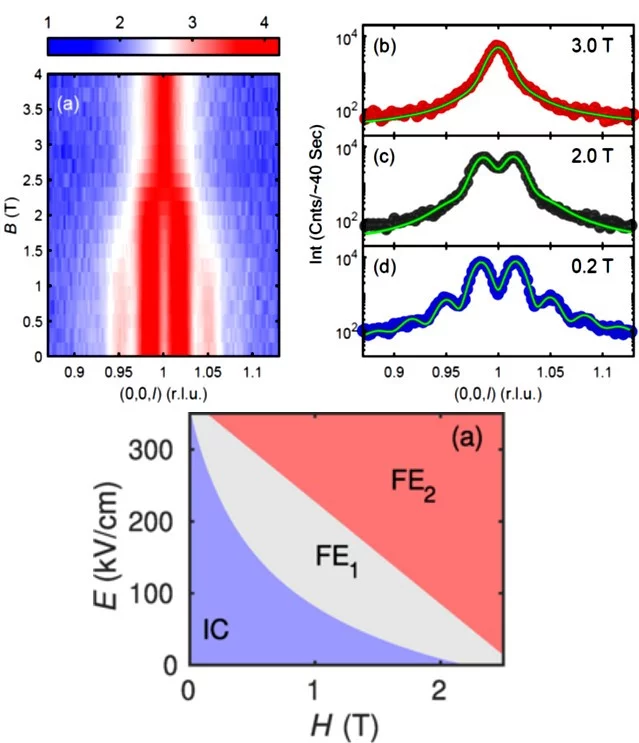Stanislav E. Nikitin, Nikita D. Andriushin, Øysten S. Fjellvåg, Ekaterina Pomjakushina, Alexandra A. Turrini, Sergey Artyukhin, Christof W. Schneider, and Maxim Mostovoy;
Abstract:
Simultaneous breaking of time reversal and inversion symmetries in multiferroics couples ferroelectricity to magnetism and is a source of unusual physical phenomena that can be used in next-generation electronic devices. A notable example is DyFeO3, which under applied magnetic fields exhibits a giant linear magnetoelectric response and a large spontaneous electric polarization induced by coexisting orders of Fe and Dy subsystems. Here, we use high-resolution neutron diffraction to show that at zero field DyFeO3 hosts an incommensurate magnetic soliton lattice formed by spatially ordered Dy domain walls with an average domain size of 231(8) Å. The long-ranged interaction between the domain walls is mediated by magnons propagating through the Fe subsystem and is analogous to the Yukawa force in particle physics. An applied magnetic field destroys the long-ranged incommensurate order, unlocks the linear magnetoelectric response, and stabilizes the ferroelectric state. The magnetic domain walls are electrically charged and the soliton array dimerizes when both electric and magnetic fields are applied. Numerical simulations with experimental parameters suggest that the generic competition between the ferroelectric and incommensurate states can be effectively controlled by an applied electric field.
Keywords: Magnetic anisotropy; DyFeO3; Thin Films; Antiferromagnets; Multiferroics; Neutron Diffraction;
Facility: Thin Films and Interfaces; PSI Center for Neutron and Muon Sciences; SINQ; Zernike Institute for Advanced Materials, Groningen;
Reference: S. Nikitin et al. , Phys. Rev. Research 7, 043173 (2025)
Read full article: here (link is external)

